Affiliate links on Android Authority may earn us a commission. Learn more.
E-Ceros Revolution 2 tablet review
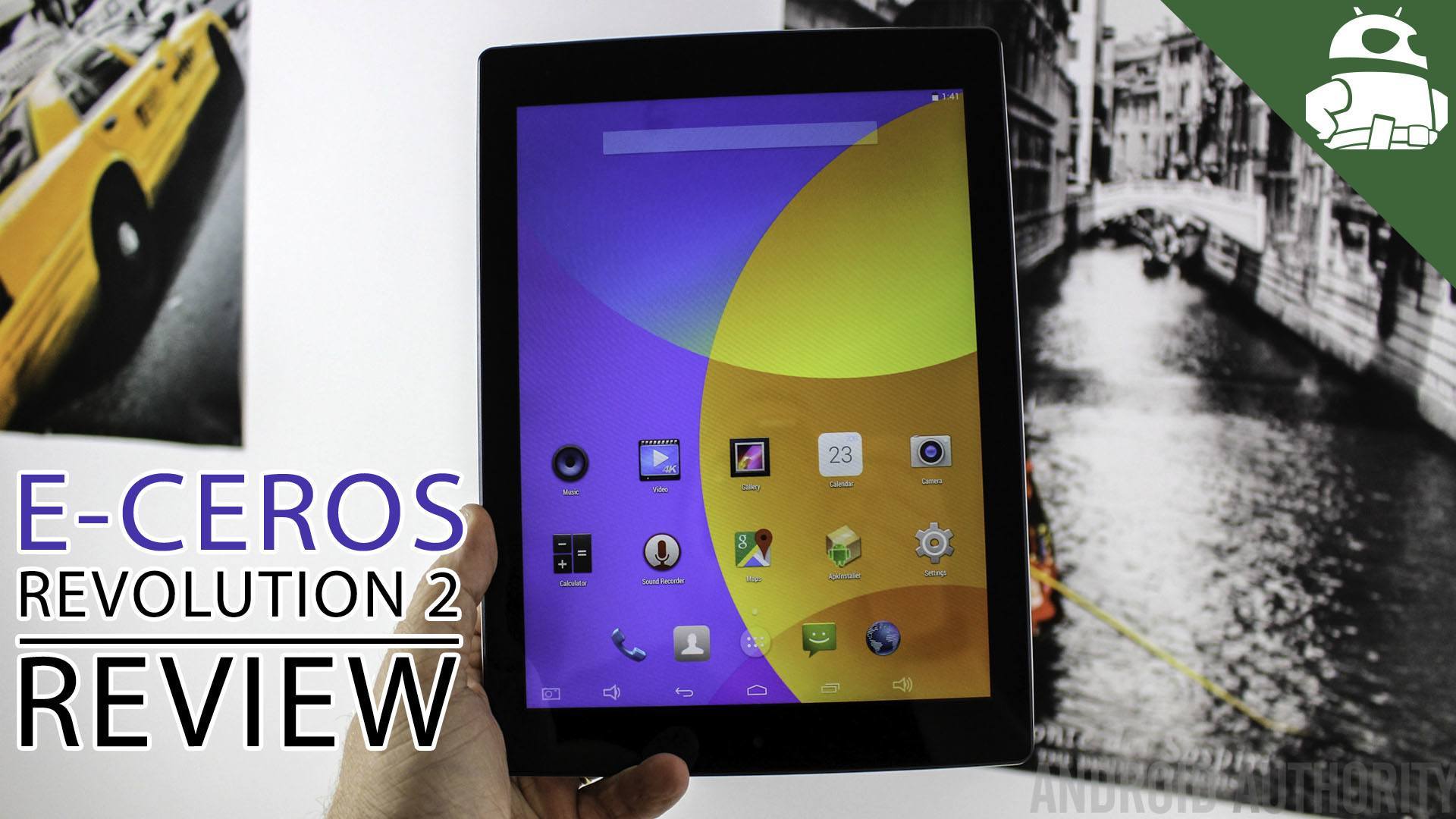
E-Ceros is a Chinese OEM that has released several tablets, and a smartphone, over the last year or so. These include the E-Ceros One smartphone, the 10.1 inch widescreen E-Ceros Vision, and the Ceros Motion – a 7-inch budget tablet. Back in August 2013, the company release the E-Ceros Revolution tablet. It was a 9.7 inch device with a 2048 x 1536 high resolution display. Now, a little more than a year later, the company has released the next iteration of the tablet, the Revolution 2.
Like the original Revolution tablet, the E-Ceros Revolution 2 is clearly aimed at those who want an Android device that looks physically similar to an iPad. The tablet sports a 9.7 inch, 2048 x 1536 IPS display with a pixel density of 264ppi (the same as the iPad), and is roughly the same height and width as the iPad (give or take a few millimeters).
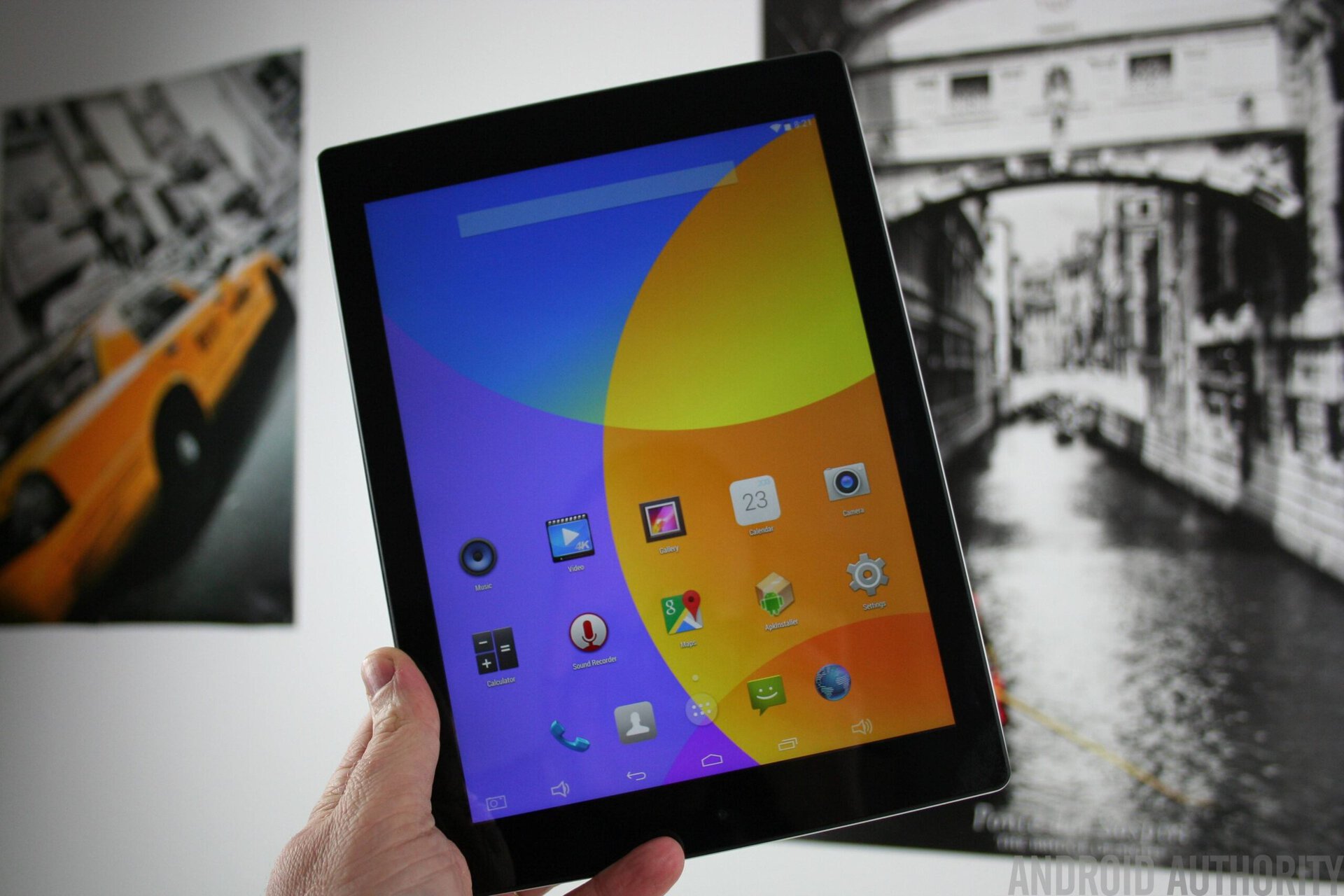
Although the front of the E-Ceros Revolution 2 looks physically similar to an iPad, once you start to turn it around you will see some clear design differences that show that this is an Android tablet. One is the lack of volume buttons. The volume is controlled using the soft keys that appear on the system bar on either side of the traditional set of back, home and recent buttons.
Switching over to the back, you will see the speaker, the plug for the external charger, the headphone jack, a micro SD card slot, a microUSB port, the power button, and the rear facing camera.
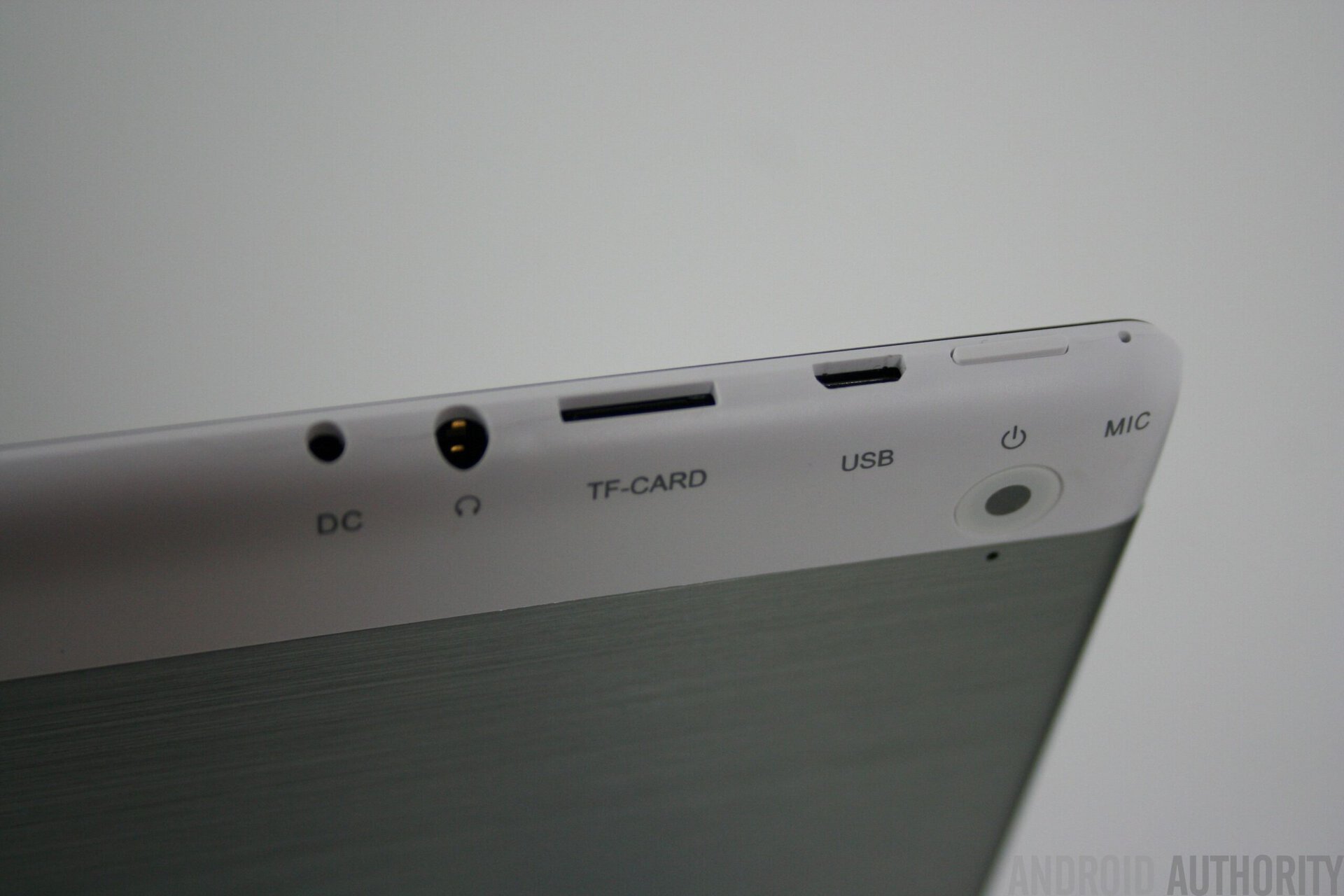
The device is constructed mainly out of plastic, including the screen, but for the price that is to be expected. It feels sturdy and doesn’t suffer from any plastic creaks or groans when you are using it. There are however a couple of negative points about its design. First, the device charges using an external charger and can’t be charged via USB. Second, there is only one speaker, no stereo here! Having said that, the sound from that one speaker is quite impressive.
The viewing angles on the Revolution 2 are excellent and the colors are vibrant, but not over saturated. With a resolution of 2048 x 1536, browsing the web is great and high-res photos from sites like Flickr are stunning. When reading an ebook with an app like Kindle the text is sharp and easy on the eyes. The QXGA display has a 4:3 aspect ratio and packs in some 3.1 million pixels. Remembering that 1080p is 1920 x 1080, the display on this device will easily display any HD videos.
Besides the high resolution display the E-Ceros Revolution 2 also features a quad-core Cortex-A17 CPU, 32GB of internal storage, 2GB of RAM, an 8 megapixel rear camera and an 8000mAh battery!
The full specs are as follows:
| Display | 9.7” Full HD, 2048 x 1576 |
|---|---|
Processor | 1.8GHz, Rockchips RK3288,Quad-core Cortex-A17 |
RAM | 2GB |
Storage | 32GB, microSD card slot, up to 128GB |
Camera | 8.0 Megapixel Rear Camera, 2MP Front Camera |
Battery | 8000 mAh |
Connectivity | microUSB 2.0, Wi-Fi 802.11 b/g/n, Bluetooth |
Software | Android 4.4 with Google Play |
Dimensions | 242 x 175 x 8 mm, 541g |
The tablet uses a fairly vanilla version of Android 4.4, but with some minor changes. There is a section in the Settings for configuring MHL and there is also a section for controlling the screenshot button which, when activated, is placed on the menu bar along with the volume, back, home and recent buttons.
One missing feature is the ability to create separate user accounts, however everything else is stock Android 4.4. There weren’t many of Google’s apps installed by default, but Google Play is available and installing Google’s apps, as well as other popular apps, is easy.
For unknown reasons, E-Ceros decided to partition the flash memory on the Revolution 2 into two parts. One of 1GB and one of 27GB. Apps are installed by default to the 1GB partition, which means you could run out of space quite quickly. However, there is the option to move apps to the 27GB partition from within the Apps section of the Settings. It would have been much better if the internal memory was undivided or that more space was allocated to the first partition.
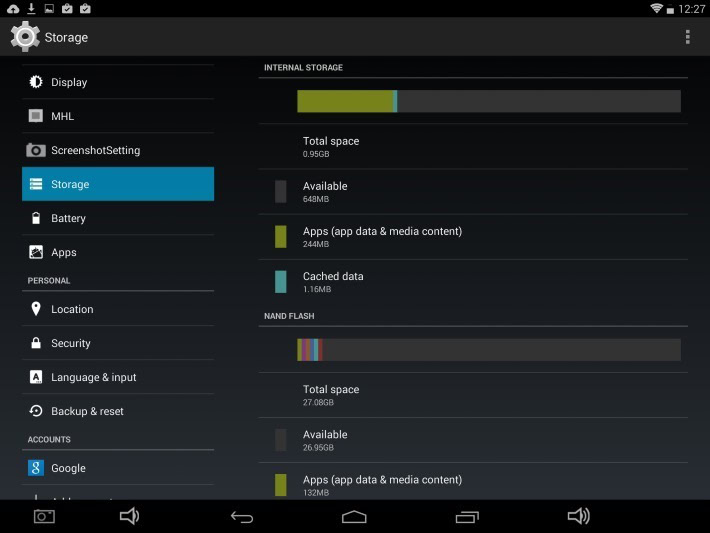
Like the first generation of this tablet, the Revolution 2 has an 8000mAh battery, which means that battery life shouldn’t be an issue. You should be able to get around 8 to 10 hours of battery life from this device, depending on how you use it. I did my usual battery tests and Epic Citadel will run for around 6 hours on one charge, which is quite impressive considering how hard that app pushes the CPU and GPU. You should be able to watch around 8 hours of locally stored video or you should be able to watch YouTube for the same length of time. All my tests were performed with Wi-Fi enabled and the screen on half-brightness.
One downside is that the device has poor overnight standby battery usage. On average the device used around 25% of its battery during a 24 hour period, when not being used.
As well as Wi-Fi b/g/n the tablet also supports Bluetooth and 3G via a HUAWEI UltraStick ES1220. Towards the bottom of the tablet is a special slot for the dongle. With it you will get support for Internet access over 3G on 2100MHz and 900MHz. According to Chinavasion’s website the HUAWEI UltraStick should be included as standard with the tablet. I didn’t receive one with my review unit, however that could have been a simple oversight.
A problem that has affected cheaper Chinese tablets in the past is poor Wi-Fi reception. However the Wi-Fi on the E-Ceros Revolution 2 is solid and works well. During my testing I was able to use Wi-Fi normally within and around my house.
At the heart of the tablet is the RockChip RK3288. RockChip processors, like MediaTek ones, are a popular choice for cheaper tablets, especially those coming out of Asia. The RK3288 is a quad-core based on ARM’s Cortex-A17 design. Cortex-A17 cores are faster than Cortex-A9 cores but slower than Cortex-A15 cores. However the A17 design is more battery friendly that the Cortex-A15. That makes it a good choice for mid- to high- end devices.
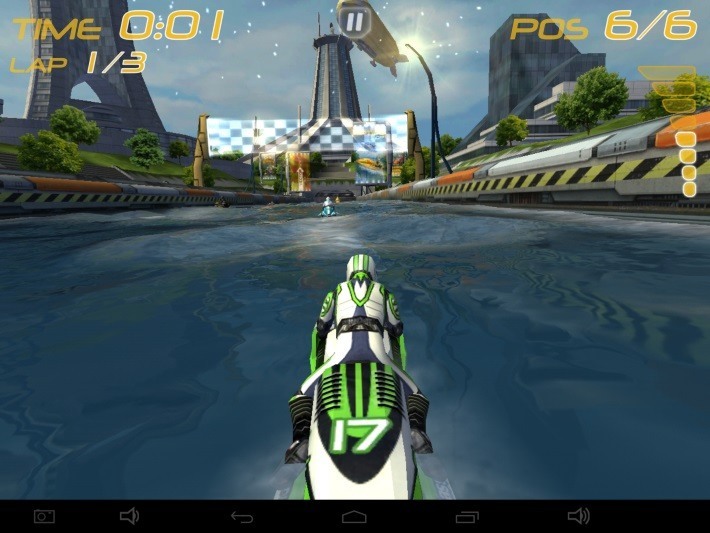
Looking at the performance benchmarks, the tablet managed an average score of 32149 on AnTuTu, double that of the first gen Revolution tablet. This just shows how much faster the Cortex-A17 is when compared to the Cortex-A9 found in the first gen tablet. For Epic Citadel the results were also very good. The Mali-T764 GPU manages to drive that large 2048 x 1536 display at 51 frames per second.
During normal use the tablet is smooth and doesn’t seem to suffer from any lags or annoying delays.
The tablet has a 8MP rear camera and a 2MP front-facing camera. With tablets, the front facing camera is often the more useful of the two, as it is used for video chats etc. The 2MP front facing camera is certainly good enough for video chats, but if you are a selfie junkie (and for some reason you want to take selfies with your tablet) then 2MP won’t be enough.
You are unlikely to be using a tablet as your main camera, but when something unexpected happens the best camera is the one you have with you. The 8MP sensor produces OK shots, nothing spectacular, but more than good enough for a tablet.
The included camera app is very simple and offers only a few controls. You can switch from the back camera to the front camera, and there are a few other settings like configuring the self-timer or whether to include your location in the photos. You can record video and there is a panorama mode, but that is it. If you want anything more you will need to install a 3rd party camera app from the play store.
Here are a few test shots!
The E-Ceros Revolution 2 is available directly from Chinavasion for just $260. That makes it a lot cheaper than the iPad and pitches it as an inexpensive option for those looking for a 9.7 inch Android tablet. It has a fast processing package, 2GB of RAM and lots of internal storage. It also includes a micro SD card slot, something missing on both the iPad and from Google’s Nexus tablets.